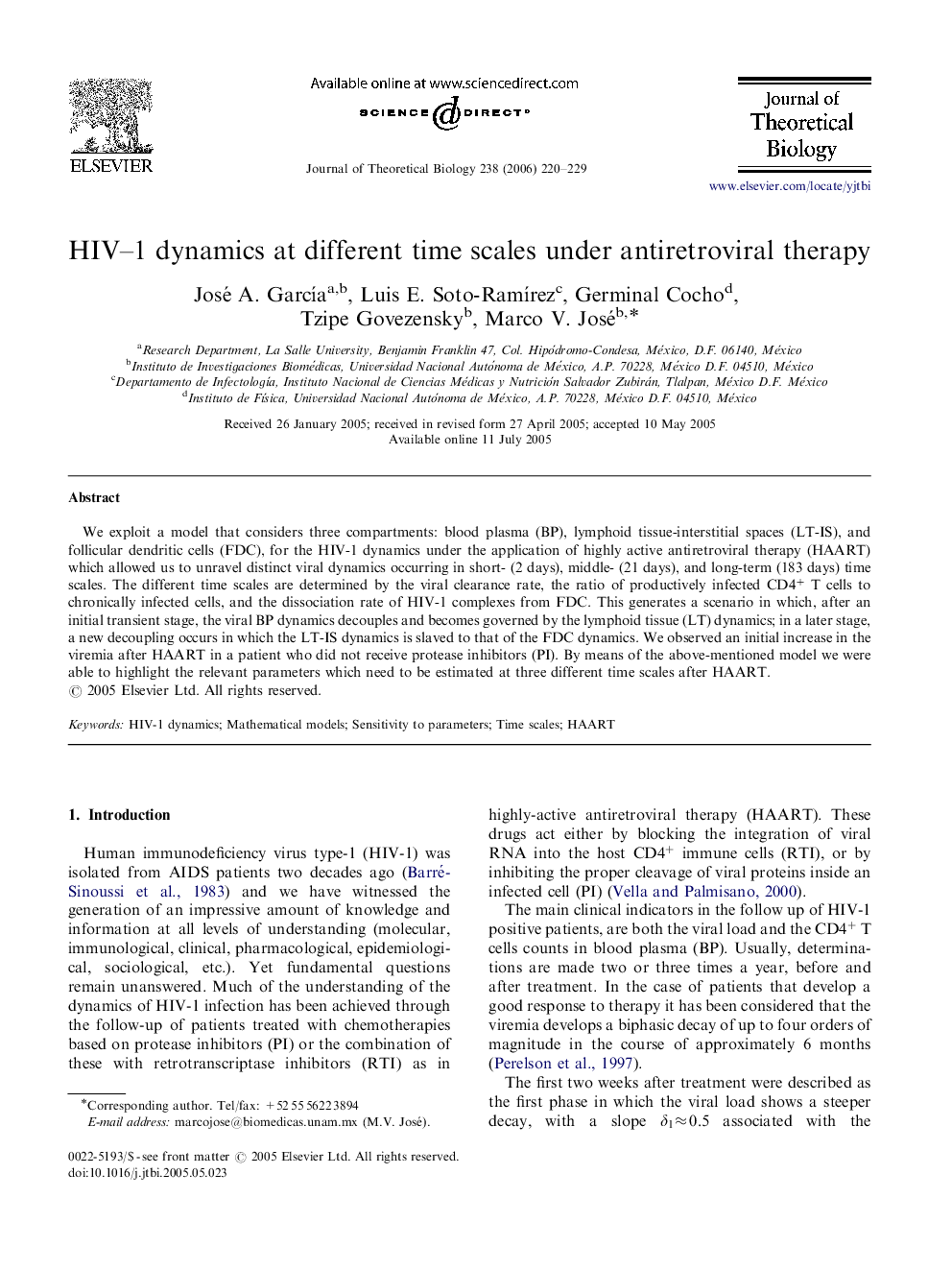| Article ID | Journal | Published Year | Pages | File Type |
|---|---|---|---|---|
| 4499790 | Journal of Theoretical Biology | 2006 | 10 Pages |
We exploit a model that considers three compartments: blood plasma (BP), lymphoid tissue-interstitial spaces (LT-IS), and follicular dendritic cells (FDC), for the HIV-1 dynamics under the application of highly active antiretroviral therapy (HAART) which allowed us to unravel distinct viral dynamics occurring in short- (2 days), middle- (21 days), and long-term (183 days) time scales. The different time scales are determined by the viral clearance rate, the ratio of productively infected CD4++ T cells to chronically infected cells, and the dissociation rate of HIV-1 complexes from FDC. This generates a scenario in which, after an initial transient stage, the viral BP dynamics decouples and becomes governed by the lymphoid tissue (LT) dynamics; in a later stage, a new decoupling occurs in which the LT-IS dynamics is slaved to that of the FDC dynamics. We observed an initial increase in the viremia after HAART in a patient who did not receive protease inhibitors (PI). By means of the above-mentioned model we were able to highlight the relevant parameters which need to be estimated at three different time scales after HAART.
